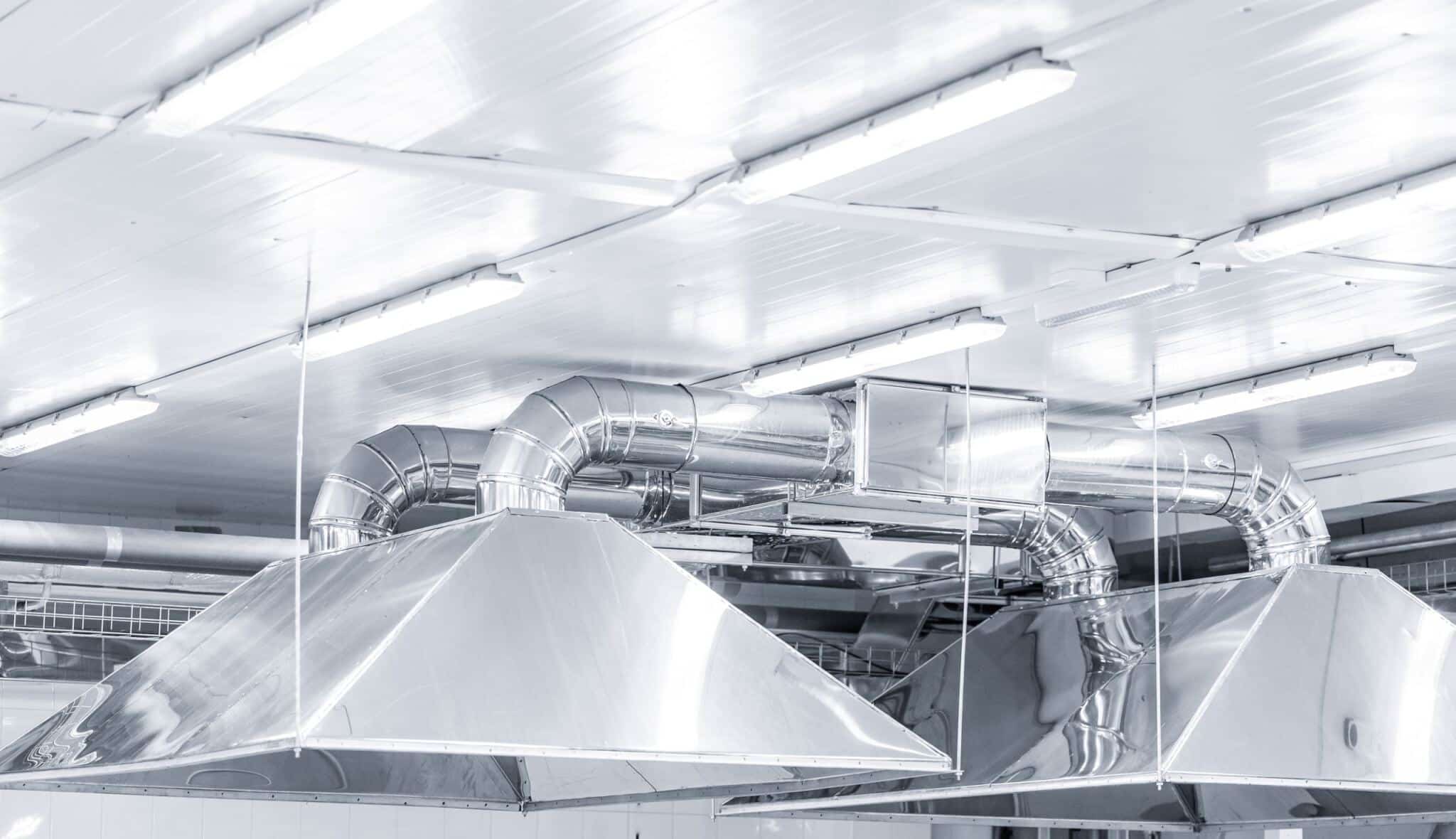In our last article, we used a hypothetical restaurant – The Harbour Lane Bistro – to estimate the amount of grease that might be created in a commercial kitchen and what happens to it.
A Quick Recap.
In the earlier articles in this series, we demonstrated that the busy kitchen in The Harbour Lane Bistro can easily generate 6,500 grams of airborne grease, mist and vapour every week. We estimated that 700 grams will not be ‘inhaled’ by the exhaust system and will settle on surfaces and appliances in the kitchen and require constant cleaning. Of the balance, 4,900 grams will be captured by the filters, and of the remaining 900 grams, 300 grams will be ejected from the system and settle on the roof or surfaces nearby, while 600 grams will accumulate in the exhaust ductwork.
The total grease accumulating in the ductwork represents approximately 9% of all the airborne grease mist and vapour that is produced by the kitchen. This however is the most dangerous part as, together with an ignition source and airflow, this grease is the fuel that forms the critical third leg of the fire triangle. Left unattended or casually managed, this can have devastating consequences for a business.
At What Point Does Grease Accumulation Start to Pose a Significant Risk?
The risk of fire in a commercial kitchen exhaust system significantly increases when grease build-up exceeds certain thresholds, as it creates a highly flammable environment. Industry standards and other guidelines followed internationally, provide measurable thresholds for when grease build-up becomes dangerous.
According to NFPA 96 in the USA, the critical grease accumulation depth that poses a significantly higher fire risk is 0.8 mm(800 microns) of grease build up. It should be noted however that in North America, commercial kitchens are typically required to have fire suppression systems installed directly in the exhaust hood (e.g., wet chemical systems). This infrastructure allows for a slightly higher tolerance for grease accumulation before it becomes an unacceptable fire risk.
The UK’s TR19 standard, developed by the Building Engineering Services Association (BESA), specifies grease thickness limits for different components of the kitchen exhaust system. In the canopy/filter housing area, the maximum allowable thickness is 0.2mm (200 microns) and in the ductwork – both horizontal and vertical sections, the maximum allowable thickness is 0.5mm(500 microns)
TR19’s threshold is lower than the NFPA 96 standard and reflects regional differences in risk tolerance and maintenance practices.Adhering to TR19 is often a requirement for compliance with UK fire safety regulations, and failing to meet these standards could void insurance coverage in the event of a fire.
In Australia, regulations focus on ensuring that fires do not ignite at all, as suppression systems may not always be present or required. Accordingly, the AIRAH Best Practice Guide for Commercial Kitchen Exhaust Management proposes a lower threshold of 0.2 mm(200 microns) which reflects a more conservative safety approach, prioritising prevention over suppression.
The BPG states that, “The frequency of cleaning should be sufficient to ensure that grease deposit limits of 200μm (0.2mm), as a mean across the system, are never exceeded.”
Why is 0.2 mm Considered a Critical Threshold?
We have noted that due to a variety of factors, the rate of accumulation of grease within ductwork is uneven, resulting in both high points and low points. 0.2mm is the critical threshold where the grease layer becomes a more continuous, uninterrupted fuel layer within the exhaust system. This is critical in fire behaviour because:
Fuel Continuity:
A continuous grease layer provides a consistent and uninterrupted supply of combustible material. This allows flames to propagate rapidly along the ductwork, rather than being limited to isolated pockets of grease.
Fire Growth and Intensity:
With a larger, seamless fuel source, the fire can grow quickly in size and intensity. The heat generated can cause additional grease to ignite, creating a self-sustaining cycle of combustion.
Spread of Fire:
Once a fire ignites in one area of the exhaust system, a continuous grease layer allows flames to travel to other parts of the ductwork, reaching the fan, vertical risers, and even external exhaust outlets.
Time to Reach Accumulation Thresholds
While we cannot calculate for high spots and low spots in the ductwork, in our hypothetical restaurant – The Harbour Lane Bistro – we can calculate for a consistent, even depth using the following variables:
- Internal Surface Area of Duct: 14.4 m²
- Weekly Grease Accumulation: 600 grams (0.6 kg)
- Grease Density: 920 kg/m³
Calculations demonstrate a weekly accumulation of 45 microns, so the time to exceed the BPG threshold of 200 microns is less than 5 weeks!
The Key Takeaway…
Every kitchen, every cooktop configuration and every exhaust system are different. Operators of commercial kitchens cannot impose a fixed cleaning schedule (as proposed by AS 1851) on a system with so many unique variables and expect to effectively manage risk.
The net result is that commercial kitchens can diligently apply the recommendations of AS 1851 and still experience catastrophic fires. The need for a new approach was one of the key drivers behind the AIRAH Best Practice Guide.
In our upcoming articles, we look at the evidence-based approach advocated by the BPG and best practices to manage and maintain commercial kitchen exhaust systems.

